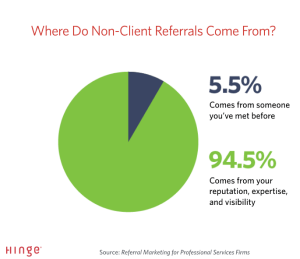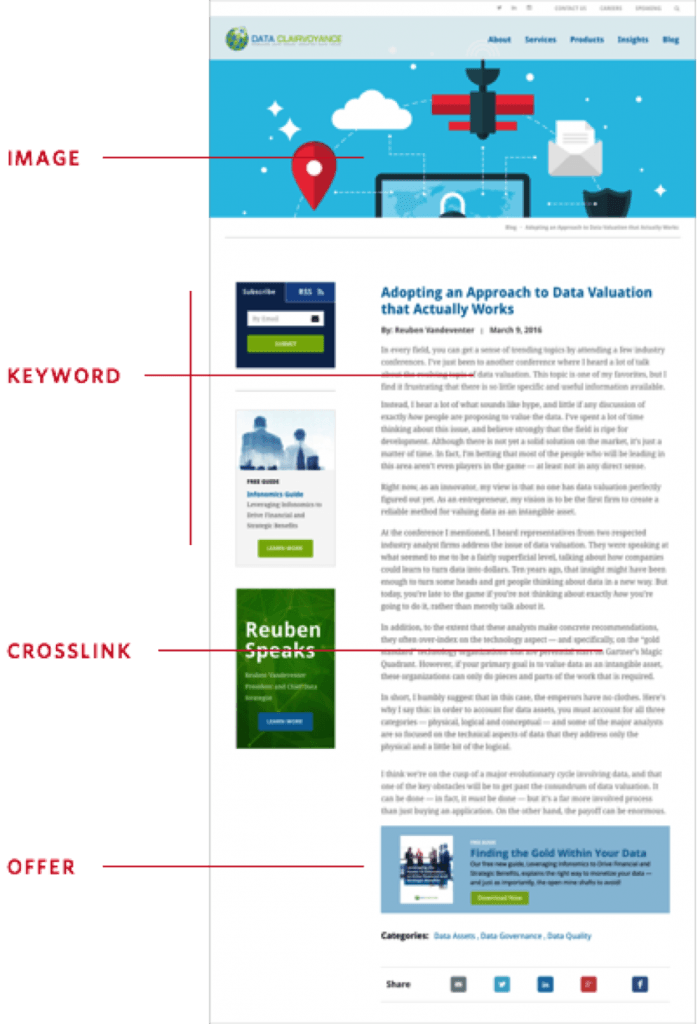We talk to a lot of professional services executives about a lot of things — but the common denominator across most of those conversations is growth. And any time we talk about growth, we also talk about expertise.
Why? If you ever get new business because of your expertise in a specialized area, you’ve experienced strategic growth. And strategic growth is sustainable growth.
Think about it. Many firms grow when circumstances allow it — they luck upon the right contract vehicles, the right referrals or the right meeting at the right time. In these scenarios, outside market forces dictate what business comes your way.
But what if you could take a more proactive path to growth and tell the market what business you want to attract? I think this is a far better path, but it only works if you embrace your expertise. It’s an amazing feeling when buyers seek you out because your reputation and expertise. At last, growth is on your terms.
And what’s the most effective way to demonstrate your expertise? Thought leadership content.
Thought Leadership Content Defined
Thought leadership content is educational material — text, audio, video, or other formats — that addresses the interests and challenges of a particular audience. It’s authoritative because it showcases the specialized expertise of an individual or firm.
What is not in this category? Anything that sells your firm. So no pitch decks or company news or product demos — not even client testimonials. Each of these is important, but for other reasons. Thought leadership content allows you to take a stand on an issue or tackle problems your key audiences are grappling with as they run their own businesses.
Done right, thought leadership content accomplishes the following:
- Demonstrates expertise
- Allows prospects to sample your thinking and approach
- Allows you to be discovered through search engines
- Helps qualify and nurture leads
- Builds your brand
- Is less expensive than traditional outbound marketing
- Works around the clock and around the globe
- Drives online leads and growth
Want to know another benefit that may trump all others? Nearly ALL non-client referrals — 94.5% — come from a combination of expertise, reputation and visibility.

Types of Educational Content
There are two varieties of educational (thought leadership) content. One we refer to as “stock”, the other as “flow”. They are both important and have a place in the customer journey.
The purpose of stock content is to really demonstrate your expertise. It’s evergreen, which means it should be just as relevant to your audience a year from now as it is the day it’s produced. It has a longer shelf life, as the name suggests, and is therefore produced at a higher level of sophistication. It can come in form of books, executive guides and other long formats.
Because this is premium content, it’s a perfect medium for lots of detail and thorough thinking — unlike a blog post, for example, where topics can be treated at a more superficial level.
Typically, stock content is placed behind a registration screen. Because it is perceived as more valuable, people are willing to exchange a small amount of personal information for access to your deeper thinking. And because it sits behind a form, titles and landing pages should be keyword optimized — but not the content itself (Google can’t see behind the registration form).
Here are two rules of thumb around stock content:
- Stock content needs a home on your website. Reserve a place on your website totally separate from self-promotional information. Consider creating a dedicated Resources or Library section. Remember, this is a place where your audience is educated, not sold to, so avoid placing case studies or promotional type of content here.
- Stock content also needs a front door — a landing page. This is a page where they can read about what they will get and its benefits before they fill out the form. It’s a chance to market your expertise.
Flow content.
Flow content is thought leadership, but in shorter, easy-to-digest pieces. It may be evergreen or it may have a brief shelf life, touching on current events or recent change in the marketplace. Because it’s shorter and requires less time to read, flow content is perfect for attracting the attention of folks who don’t yet know you. Blog posts are the most common flow pieces, though it can take many other forms: short videos, SlideShares, interviews, and more.
Unlike stock content, flow pieces are open access. You would never require information in exchange for flow content, and because it’s open it can potentially be found through a Google search
And now for 6 rules of thumb around flow content:
- Flow content should be optimized for a relevant keyword or cluster of keywords. This is so the search engines can index the material and direct readers to you.
- Flow content must be fresh — meaning it must be produced on a regular basis. How often? Once a week is considered excellent, but once every two weeks is just fine, too. If you are exceptionally busy, once a month is better than nothing.
- Blogs should include crosslinks. These are hyperlinks embedded into the body of the blog that link to other content — stock or flow — on your website.
- Don’t be afraid to make your posts long. Aim for 1,000+ words and your flow content will be separated from a lot of the fluff that’s out there.
- If you are writing blog posts, make sure they include share buttons. Make it easy for your readers to pass around your insights. As an added bonus, the more people share your content, the better that content looks to Google and the more likely your post is to rank well in search.
- Tell them what to do next. Always include an offer — a call to action that encourages the reader to take a next step: read another post, download a relevant piece of stock content or contact you for a personal consultation.

There are many, many facets of thought leadership content. Use this article to lay a foundation, then build upon it. Over time, you’ll be rewarded with increased visibility, a stronger reputation and sustained growth.
Additional Resources:
- Read the book that explains how any expert can climb from obscurity to prominence: The Visible Expert®. It’s free!
- Read the latest research on what really generates referrals. Download the Referral Marketing Study and find out.
- Join Hinge University and check out our wealth of step-by-step How-Tos, Quick Start Kits and video courses. Whether you are new to marketing or an experienced hand, we’ve got you covered
How Hinge Can Help:
Hinge has developed a comprehensive program, The Visible Firm® to deliver greater visibility, growth and profits. This customized program will identify the most practical offline and online marketing tools your firm will need to gain new clients and reach new heights.



